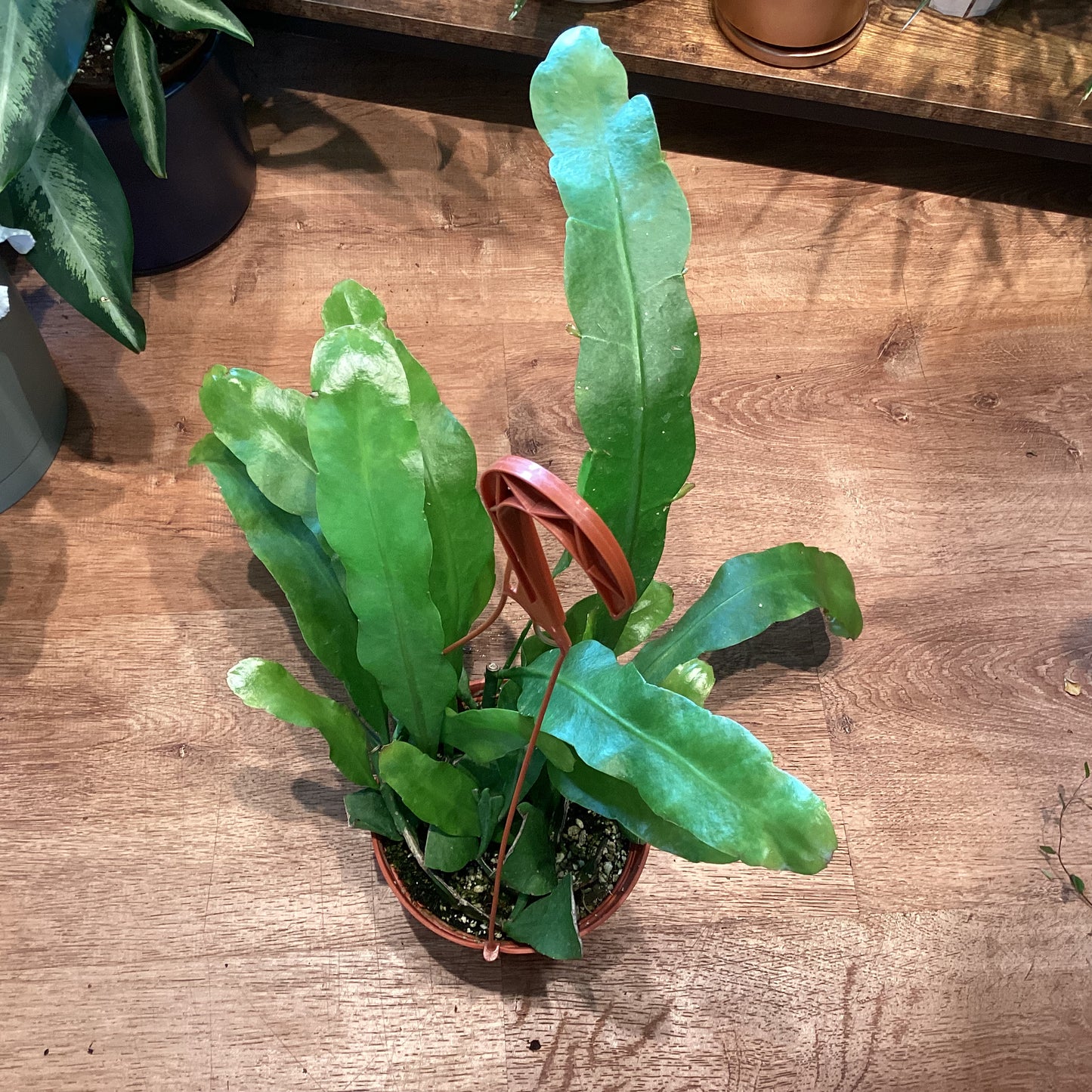The Plant Lady SF
Epiphyllum oxypetalum ‘Queen of the Night’
Epiphyllum oxypetalum ‘Queen of the Night’
Couldn't load pickup availability
Epiphyllum oxypetalum, commonly known as 'Queen of the Night,' is a spectacular tropical cactus prized for its large, fragrant, white flowers that bloom dramatically at night. Native to Central and South America, this epiphyte produces blooms up to 10 inches across, which open at dusk and fade by dawn—making every flowering event an enchanting occasion. The elegant, sprawling foliage with flat, leaf-like stems adds to its charm during daylight hours.
Easy to care for and tolerant of indoor conditions, 'Queen of the Night' rewards growers with memorable flowering events that are well worth staying up late to witness.
Light: Bright indirect or filtered sunlight. Avoid intense direct sun.
Temperature: Prefers intermediate to warm conditions (55–85°F). Protect from frost.
Humidity: Moderate (50–70%) humidity is ideal, though it's adaptable to typical indoor conditions.
Water: Allow soil to dry slightly between waterings. Reduce watering in winter.
Potting mix: A well-draining, cactus or orchid-type mix. Avoid dense soil.
Fertilizer: Feed monthly during the growing season with a diluted balanced fertilizer or cactus-specific fertilizer.
How to grow Epiphyllum oxypetalum indoors:
This plant thrives in typical indoor conditions. Place it near a bright window with indirect sunlight. Ensure good drainage and let the soil partially dry between waterings to prevent root rot. During summer months, regular watering and monthly feeding encourage vigorous growth and flowering. Distilled or filtered water is ideal, though high-quality municipal water such as San Francisco’s Hetch Hetchy supply is typically safe as well.
How to grow Epiphyllum oxypetalum outdoors in the Bay Area:
In the Bay Area, 'Queen of the Night' grows best in sheltered, mild climates protected from frost and strong winds. Ideal spots include shaded patios, porches, or gardens with filtered sunlight or dappled shade. During winter, protect it from temperatures below 40°F by bringing indoors or placing in a frost-free area.
Bloom season: Primarily summer, occasionally into fall
Pet safe: Yes
Difficulty: Easy to intermediate. Forgiving and rewarding even for beginners.
Share


